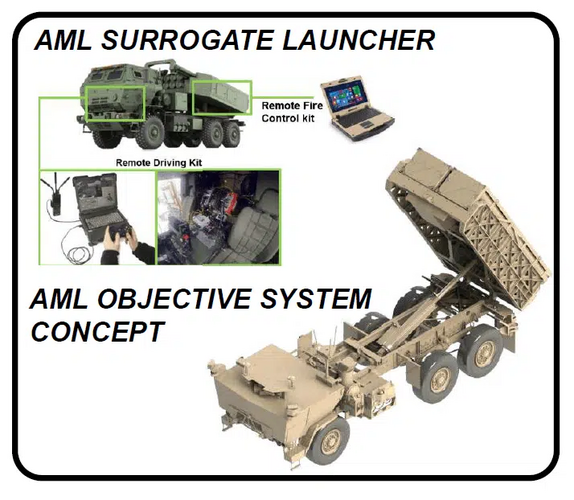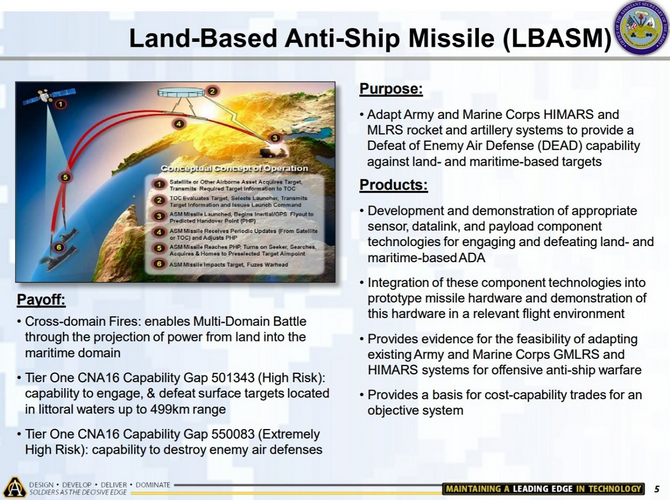For speculative discussion purposes, PrSM on HIMARS can operate in tandem with the new Navy Marine Expeditionary Ship Interdiction System (NMESIS).
NMESIS carries two stealthy 100 nautical miles (114 miles/185 kilometers) Naval Strike Missiles (NSM) on an unmanned 4×4 Joint Light Tactical Vehicle (JLTV) truck that can be sling-loaded by a USMC CH-53K “King Stallion” helicopter for more austere field conditions, mobility, and flexibility. M142 HIMARS (and the unmanned AML) can be transported internally via Marine KC-130J “Hercules” military cargo aircraft and thus requires a landing strip.








